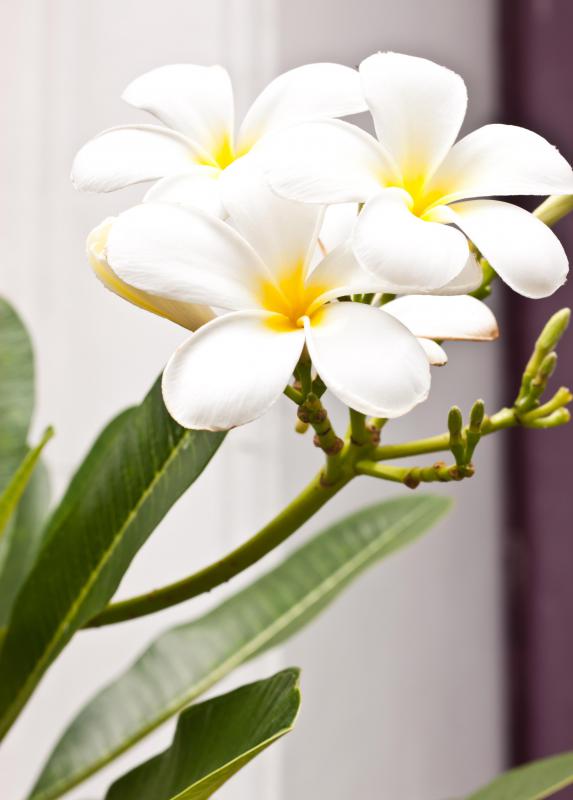At WiseGEEK, we're committed to delivering accurate, trustworthy information. Our expert-authored content is rigorously fact-checked and sourced from credible authorities. Discover how we uphold the highest standards in providing you with reliable knowledge.
How can I Make a Lei?
A lei is a a garland of leaves, flowers, shells, or other natural items designed to be worn around the neck, wrists, or ankles, or worn on the head like a crown. Many Polynesian cultures make leis for a variety of occasions, but the most famous lei is the Hawaiian lei, often made from sweet smelling plumeria blossoms or stunning orchid blossoms. It can be fun to make a lei for someone on a special occasion, or to create a large number of leis for a luau or Polynesian themed party.
Generally, leis can be broken up into two categories. Fresh leis use perishable items such as flowers and leaves, and are usually made on the day that they are used. Permanent leis are made with feathers, shell, bone, teeth, hair, and a variety of other items which will not decay as readily. A permanent lei may be passed down through a family, and examples of particularly stunning permanent leis can be seen on display at museums that celebrate Polynesian culture.

Most people appreciate a fresh lei, and it is relatively easy to make a lei with fresh flower materials. Anyone familiar with beading or sewing can make a lei, and even the inexperienced will not be too far behind. Hawaiians use a special long needle called a lei needle to make a lei, but a carpet needle or large sewing needle can be used as well. Pick a sturdy substance to string your lei on, and you are ready to make a lei.

Common lei components include orchids, plumeria, cigar flowers, leaves from the maile vine, ti leaves, and mock orange. Any decorative or delicious smelling plant product can be used, though. Consider the shape of the flower when making your lei: some flowers look best when strung from end to end, in a style called kui pololei. Other flowers can be formed into a dense pattern by being strung through their stems in a radiant pattern known as kui poepoe. Sometimes flowers are strung with the needle run through the very bottom of the flower in an alternating pattern, called kui lau or lu.
When you are ready to make a lei with loose flowers prepared and needle threaded, make a big knot approximately two inches away from the end of the string. Start stringing your flowers, moving them down the length of the string to the knot and keeping them evenly spaced and flush with one another. When you have several inches of string left, make another knot and tie the two tails of the string together for a neck lei, or tie the lei directly onto someone if you make a lei designed for the wrists or ankles.
You can use a variety of traditional techniques to make a lei in addition to traditional kui, or stringing. Kipu'u involves knotting vines and leaves together, while hili involves braiding a single material such as ti leaf into a lei. Haku involves braiding around a core, and is commonly used for head leis. Finally, you can sew a lei to a solid foundation in a technique called humu papa.
AS FEATURED ON:
AS FEATURED ON:












Discuss this Article
Post your comments